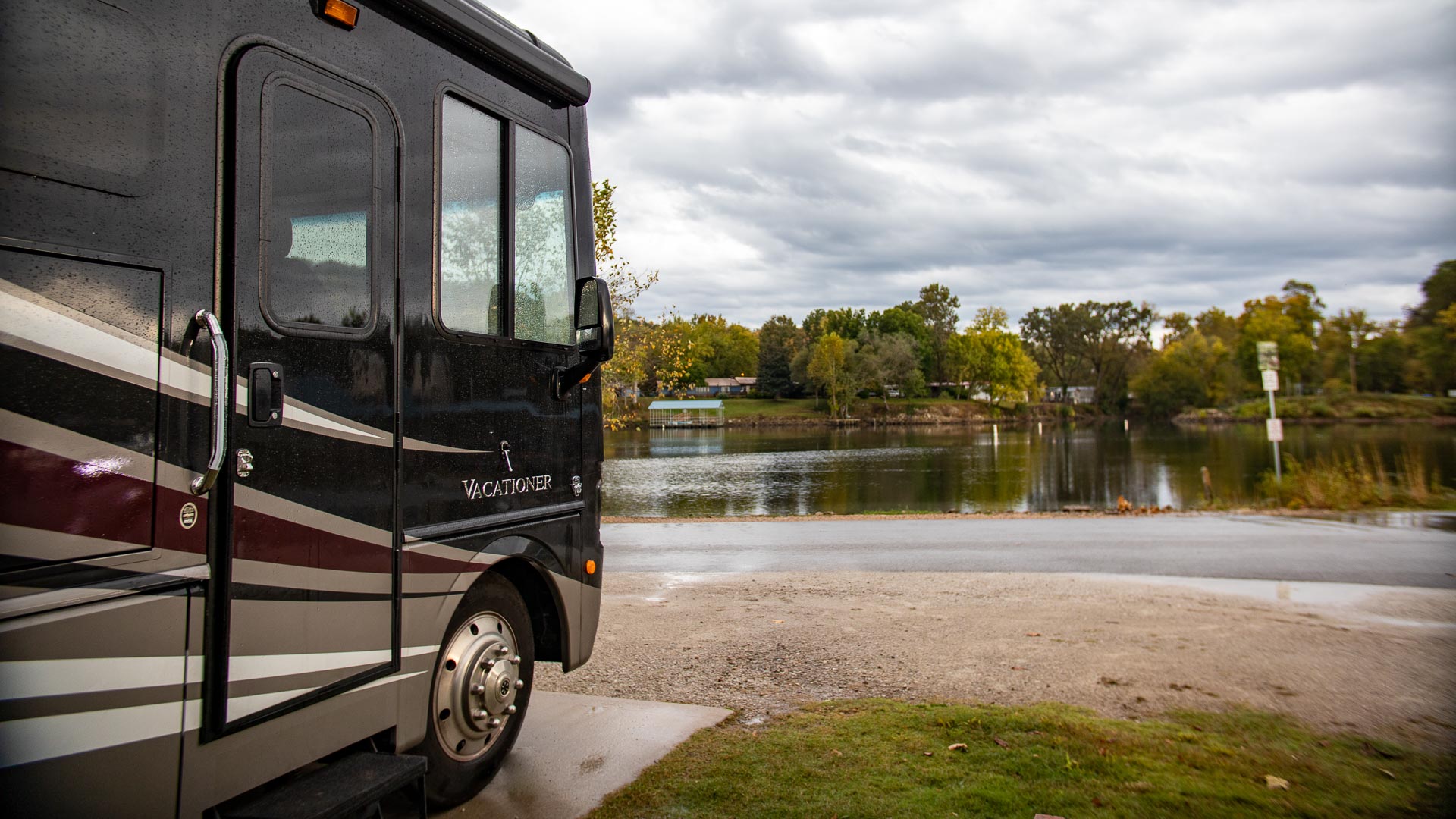
The call of the open road is loud. The pull of the great outdoors is strong. For these reasons, and so many others, the number of people getting in on the fun of RVing has greatly increased over the past few years. There’s no better way to get out and be one with nature than to park your rig in the middle of nowhere and set up camp! But in order to ensure many years of fun adventures, you’ll need to make sure you keep up with maintaining your RV so it’s always ready to go when you are. Whether you have a teardrop trailer or a 45-foot Class A, a decent level of knowledge of your RV’s systems and how to maintain them is important. Even if you aren’t handy, it’s helpful to be able to talk through an issue with a tech to reduce the amount of (billable) time spent trying to figure out the source of an issue. Here are seven simple ways to maintain your RV and keep it road ready!
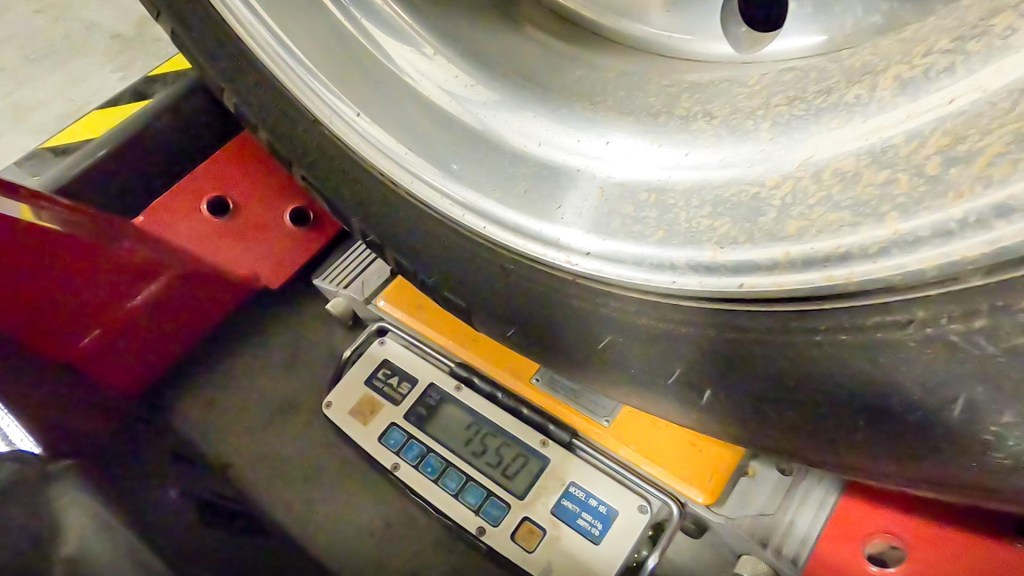
Know how much your rig weighs
This one is first because it can affect several of the other things you’ll want to know and keep an eye on. Each RV, trailer or motorized, has a GVWR (gross vehicle weight rating). This is the manufacturer’s stated maximum weight limit for your rig to operate safely on the road. In the case of travel trailers and fifth wheels, be sure to know the tongue weight and payload ratings for your truck as well. Keep in mind the GVWR includes everything on board, from gear to water, and in the case of motorized RVs, people and pets! Being over the GVWR can cause premature or irregular wear on tires, suspension, wheel bearings and drivetrain components on both the RV itself and the tow vehicle. You can weigh your rig at a CAT Scale so you can be sure you’re not too heavy.
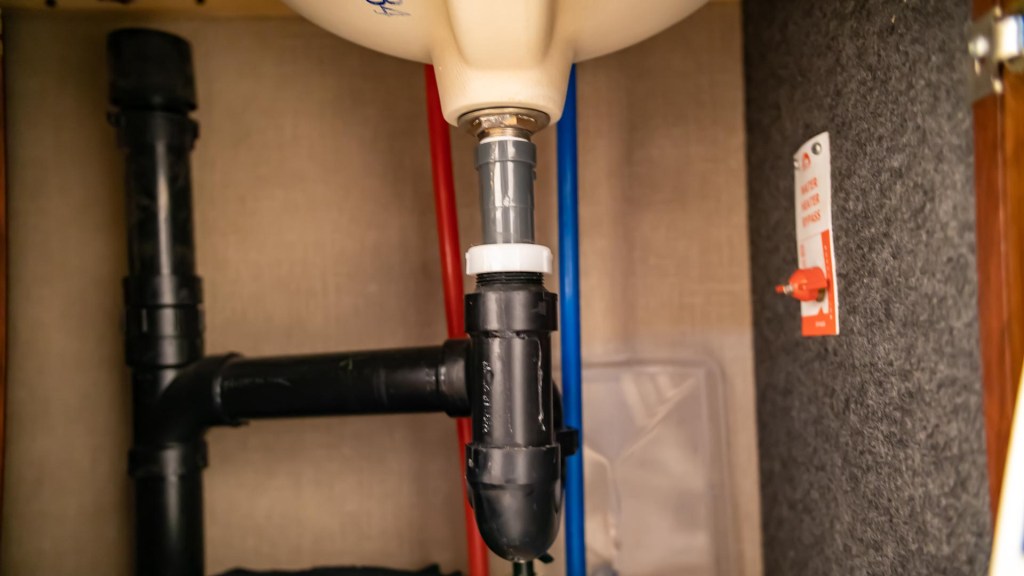
Inspect your plumbing
This may sound daunting to most people, but in terms of regular maintenance, it’s actually pretty simple. As you drive down the road, bumps, wind and uneven road surfaces cause your RV to shake, twist and move in ways that it doesn’t when you are stationary. Thankfully, most modern RVs are designed to handle this well. But physics can’t be denied, and things can and will loosen up over time. Periodically checking all accessible plumbing fittings can go a long way in preventing a big problem. In most applications, you’ll find red and blue PEX water lines supplying water to sinks, showers and toilets. You shouldn’t have to do much with these, but having a few PEX crimp clamps and a pair of crimpers on board is a good idea, in case you need to replace one. In cases where these lines join with braided stainless lines (like an extendable kitchen faucet), you’ll want to tighten those connections occasionally. Also check your sink drain pipes. Usually made of PVC, these fittings require simple tools or are toolless (hand tighten).
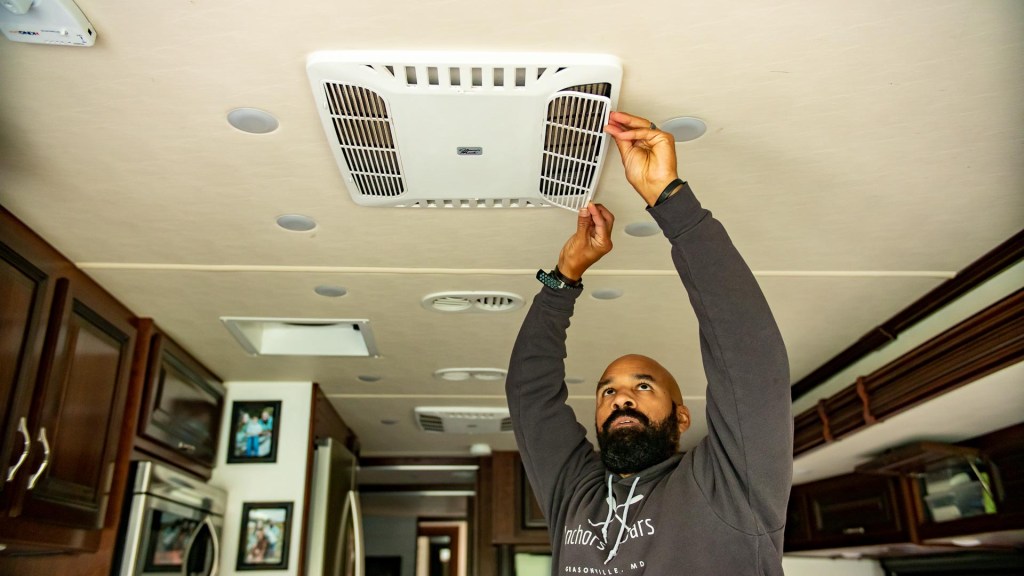
Check and clean your AC units
The last thing you want to deal with in the heat of summer is an issue with your AC units not performing well, or at all! Fortunately, keeping them clean is a relatively easy process. The filters are located on the inside of the RV on the part of the AC unit that you see on the ceiling. The filters are located behind the plastic grates that simply pop off. Take the filters and wash them with warm water and mild dish detergent until they are clean. Let them dry thoroughly and then place them back in the AC unit. If there are any tears or damage, it’s probably best to replace the filters. Cleaning intervals will vary depending on how often you use your RV. For us as full-timers, we clean them monthly. You’ll also want to clean dust and debris off the compressor coils/heat exchangers on the outside of the unit. On the roof, remove the shroud from the AC unit and use compressed air to blow out the accumulated dust. This should be done about once a year. And while you’re at it, clean the screens on your vent fans, too.
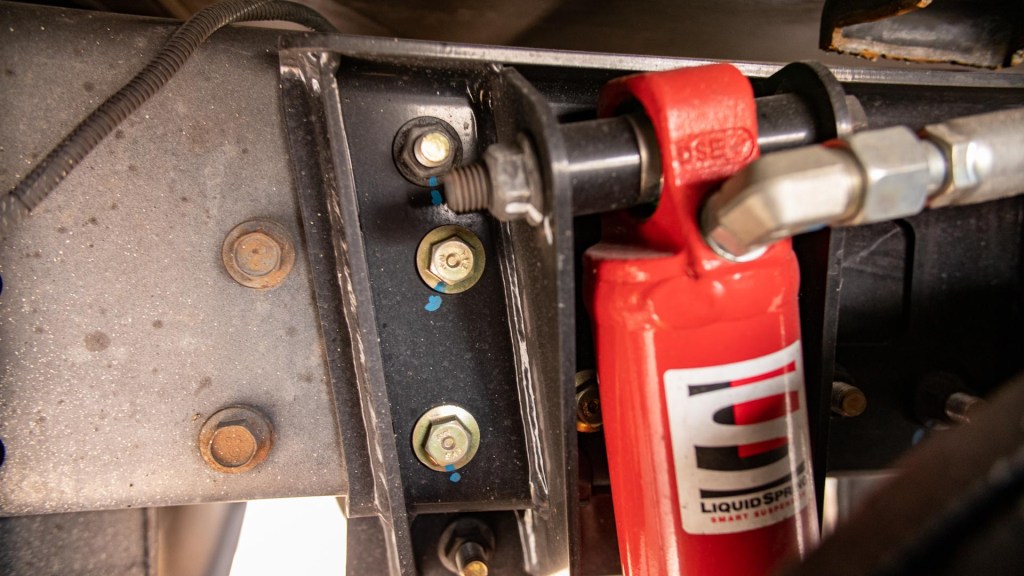
Check your tires, brakes and suspension components
Whether you’re mechanically inclined or not, being aware of what is going on underneath your rig is important. Even if you don’t know how to repair an issue, knowing how to spot one could help you avoid unnecessary damage, or worse. Always check tire pressure before getting on the road to ensure proper inflation. A TPMS (tire pressure monitoring system) is a must-have on the road, as well. Also check the tread for uneven wear and the sidewalls for any cracks or bubbles. These are signs that the tire should be replaced immediately. If you’re comfortable jacking up the RV and removing wheels, check your brake pads for wear and replace them as needed. And get underneath to check out your suspension components. Check mounting bolts on leaf springs and shock mounts for tightness. Pro tip: Mark the nut with a paint pen to the surface behind it. That way it’s easy to spot if it has moved or not. If you have a trailer, make sure to have the wheel bearings packed at the recommended intervals. Keeping all these components in good working order will keep you running smoothly down the road.
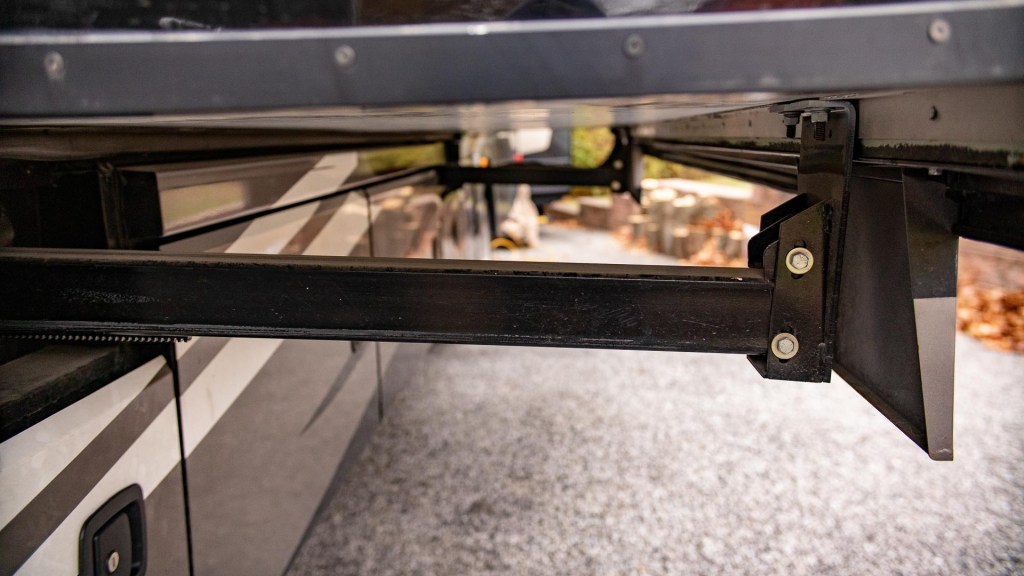
Lube your slide-out seals and rails
The seals around the outside of your slide-out flanges and openings help to keep wind, water and debris out of your RV. But over time, the rubber seals can dry out and become brittle if not properly maintained. Use a dry silicone spray or recommended lubricant application to keep the seals hydrated and flexible. Also make sure your slide rails are clean and dry. Check your manufacturer recommendations, as they vary depending on the type of slide system you have. Some will need lubrication; some say not to.
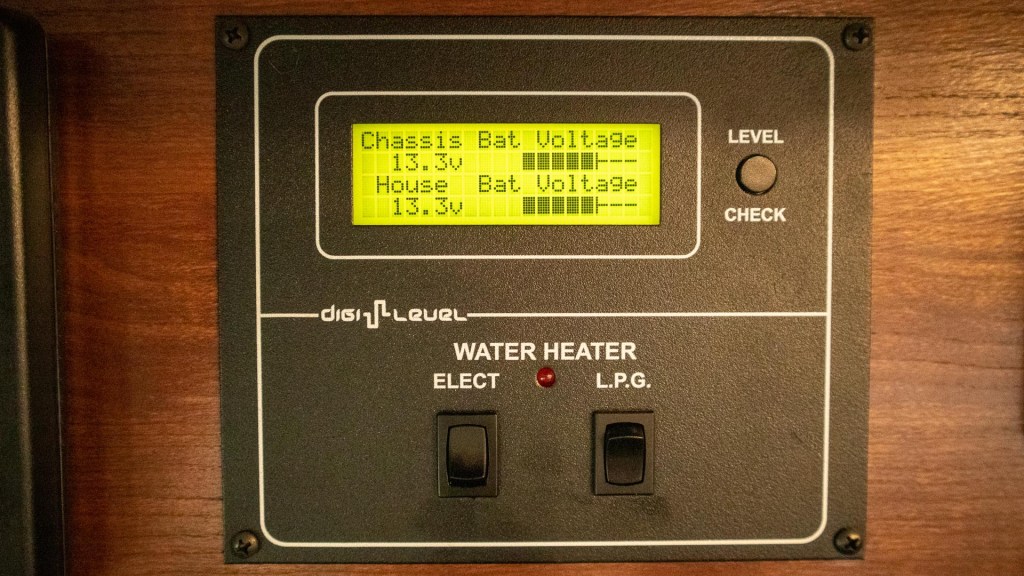
Keep your batteries in a good state of charge
Make sure all wire/terminal connections are tight and that the terminals are free of corrosion. If you have flooded lead acid batteries, check the water levels monthly and top them off as necessary to keep them operating well. And don’t let them fall below 50% of their charge capacity, as this will damage them and decrease their performance. If you have sealed or maintenance-free batteries such as AGM or lithium ion, check periodically that they are secured well and all connections are tight.
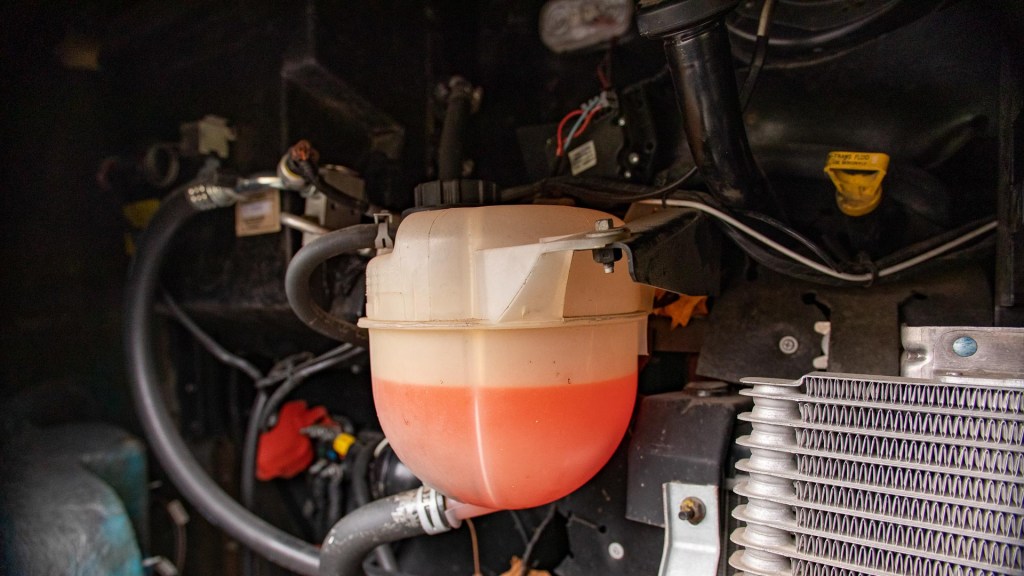
Check your fluid levels regularly
If you have a motor home, routinely check your fluid levels and drain and replace fluids as necessary. Keeping up with regular oil changes on the engine and knowing your service intervals on transmission and differential oils is just as important for your rig as it is for your everyday vehicle. Also, check your coolant level at the same time you change your engine oil, and top off your windshield washer fluid, too. A buggy windshield is always a pain!
If you have the tools and the knowledge, doing your own RV maintenance can keep your money in your pocket where it can be better spent on your next adventure. But if you’re hesitant to attempt some of these tasks, be aware of what to look for and don’t be afraid to have your RV serviced by a knowledgeable service center. We recently had a shower plumbing issue that was beyond my scope and had a great experience at the REV Group Service Center to have it repaired. But I shared everything I knew about what was going wrong, and that helped the techs hone in on the issue quickly without having to spend a lot of time hunting it down. RV maintenance is important and will ensure you many years of enjoying the outdoors from your own little vacation home on wheels!





